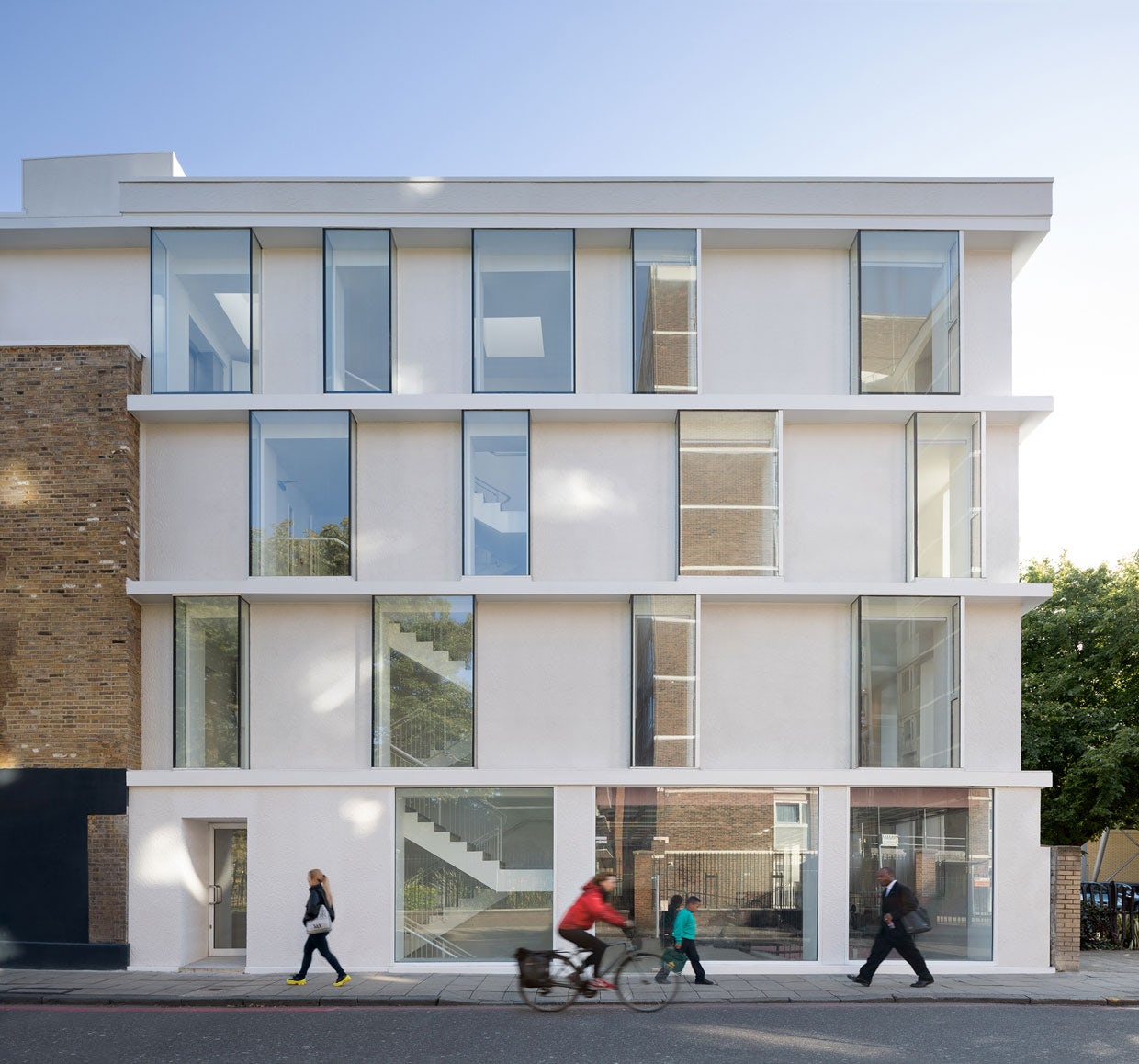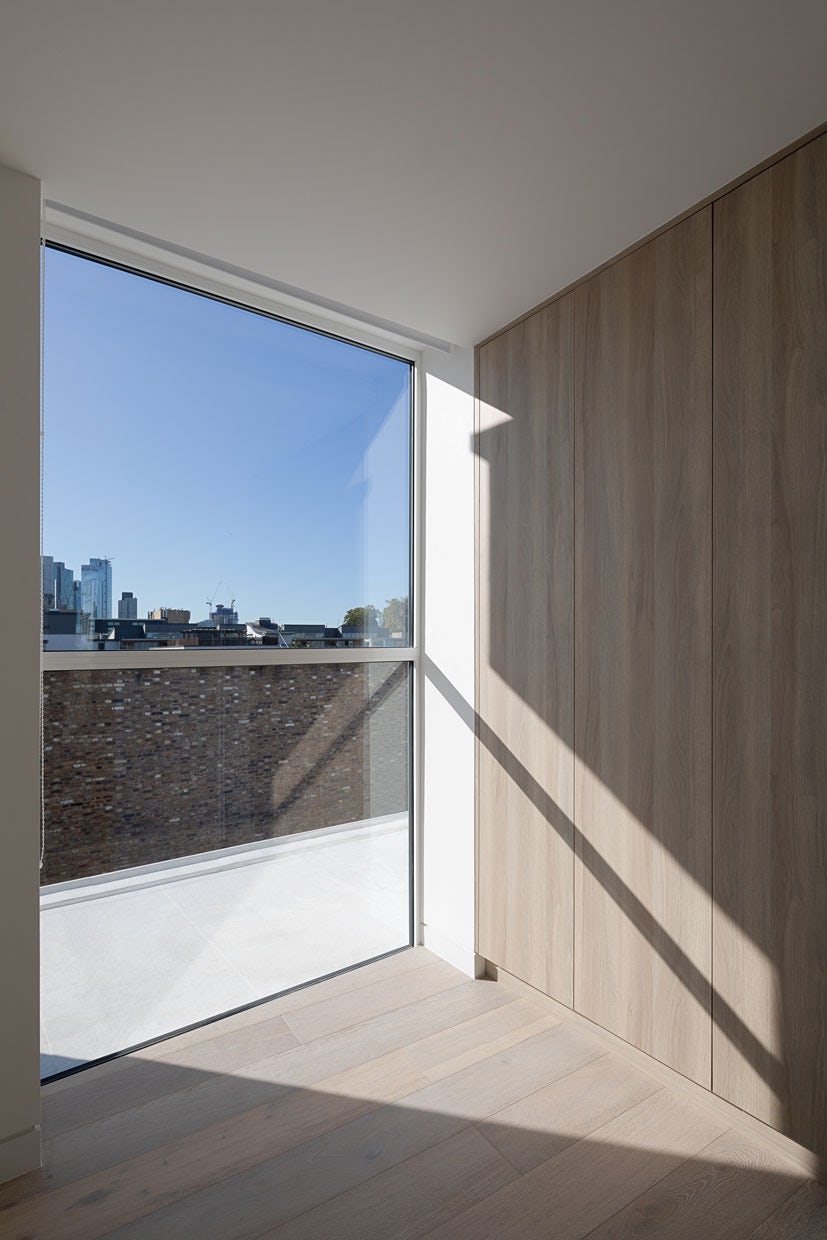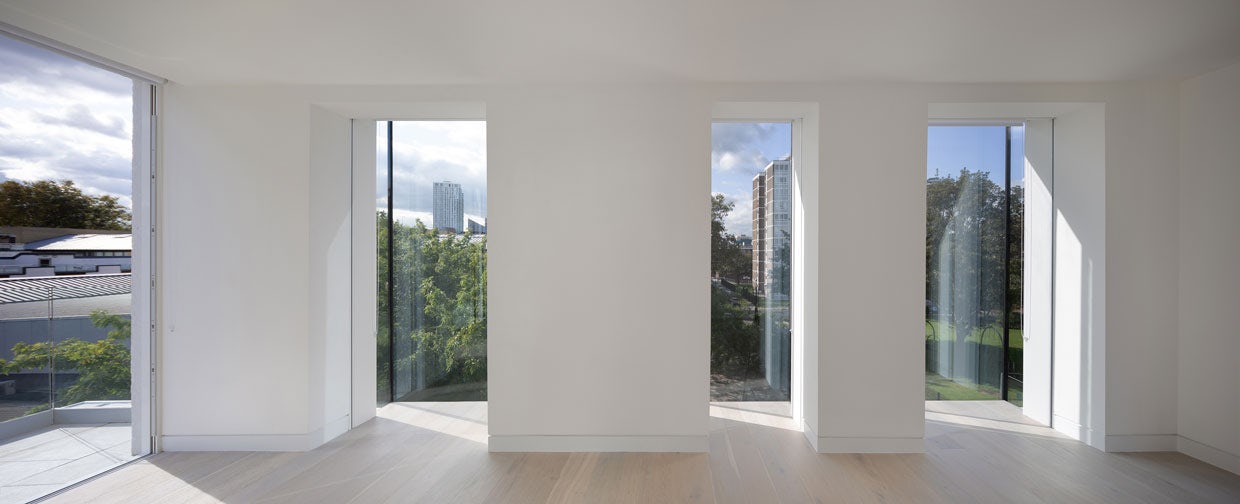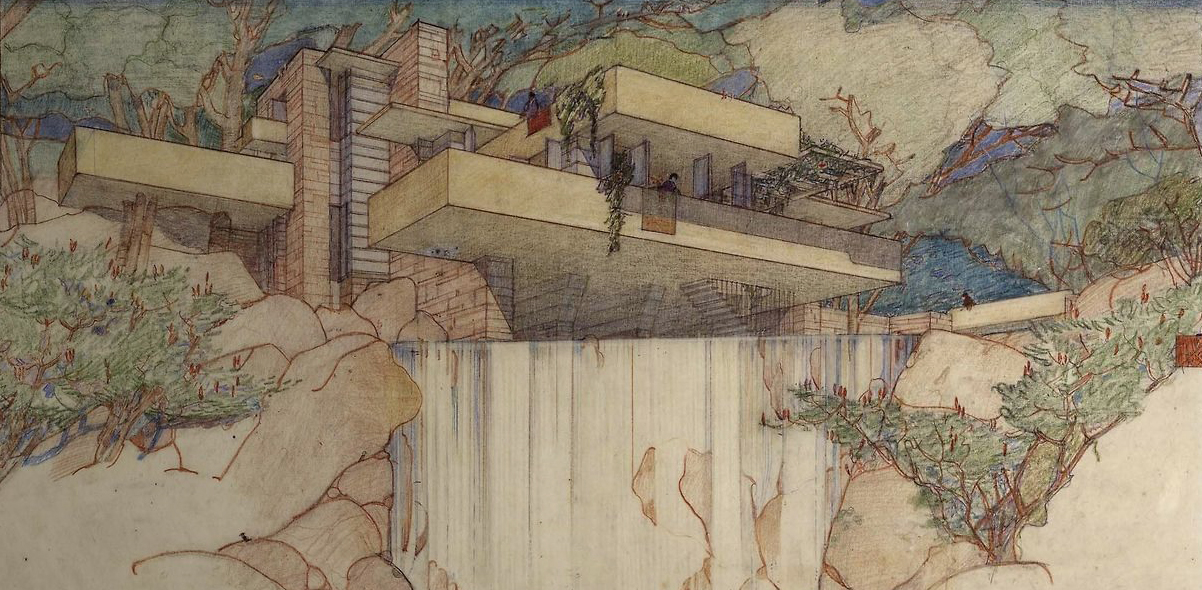The Paintworks Apartments, is a former artists workshop in the Kingsland Road conservation area which was converted and extended with a contemporary extension into 8 residential units and 2 commercial units. The extensive extension both into the basement of the existing building and into the rear carpark was structurally very complex. The building exaggerates the large bay window typology in a contemporary interpretation as a suspension of the interior externally. The building is clad in an environmentally sustainable recycled resin and stone compound which is mapped with a crumpled paper texture, reminiscent of the origins of the building as artists studios and paint supply workshop.
Architizer chatted with Amrita Mahindroo from DROO PROJECTS to learn more about this project.
Architizer: What inspired the initial concept for your design?
Amrita Mahindroo: DROO says “We sought to create layers of space within a thick facade of projecting glazed bay windows, which hang like picture frames on to the surrounding context. They create dialogue between the building’s past and future. The windows are both within and outside the envelope concurrently and create an in-between space within vast volumes, in which one may sit perched between the city and interior.”

© DROO PROJECTS
What do you believe is the most unique or ‘standout’ component of the project?
From the outside, a white, custom-textured ‘crumpled paper’ façade envelops the minimalist structure and is a nod to the building’s history as artists workshops. Large framed box bay windows on each of the five floors bring to mind canvases and serve to flood the building with light and frame views out on to the city. The architectural language is articulated, but with modest restraint.
Materially, the façade is made of a recycled resin and concrete compound called Acantha Papyrus. DROO created the particular texture especially for this project, to be an echo of the building’s story. The material is environmentally sustainable due to the recycled content, and it is also extremely light, resistant to heat, temperature, and weathering.

© DROO PROJECTS
What was the greatest design challenge you faced during the project, and how did you navigate it?
Ultimately the site was very challenging and tight. It borders on Hackney college on one side, and the Kingsland Road terrace conservation area on the other. Many sight lines had to be taken into account, as well as ensuring the overall structure fit within with the neighbourhood. The sheer quantity of glazing and the very large windows are skillfully incorporated to make sure that the sight lines and privacy of both occupants and neighbours are protected. The team endlessly pushed and pulled floor-plates to produce an articulated façade system that respects all of the conservation constraints.
DROO’s design includes an extensive extension to the basement, and into what was the rear carpark on the site. The building is an extension of Victorian industrial warehouse so the geometry of the original building lines extend along the slabs of the extension, and the bay windows.

© DROO PROJECTS
How did the context of your project — environmental, social or cultural — influence your design?
DROO have completed The Paintworks, a contemporary mixed-use building over 1550m2 in Shoreditch, London. Set in a conservation area, The Paintworks is a former artists workshops and art supplies store on the corner of Kingsland Road and Falkirk Street. DROO has converted and added to the existing building to become a contemporary collection of apartments, ranging from 1 – 3 bedrooms, and 2 office spaces. DROO has also designed the interiors, with a focus on natural light and accentuating the space, to create a perfect blank canvas for residents to enjoy city living.

© DROO PROJECTS
What drove the selection of materials used in the project?
Sustainability, and a belief in circular economies and the use of recycled materials.
What is your favorite detail in the project?
The windows.

© DROO PROJECTS
How important was sustainability as a design criteria as you worked on this project?
Extremely. It was crucial that we create a design which considered both environmental sustainability hence the material choices and also the social sustainability to address crucial well being and mental health issues when designing affordable housing.
In what ways did you collaborate with others, and how did that add value to the project?
This project was an exercise in co-creation from woah to go, with the clients, tenants for the commercial units and the residents, the authorities and the surrounding community.
How have your clients responded to the finished project?
They love it, and the end users are thrilled.

© DROO PROJECTS
What key lesson did you learn in the process of conceiving the project?
That there are a lot of people involved in this process and it impacts a broader community all who need to be apart of a process.
How do you imagine this project influencing your work in the future?
We have been developing research on building waste composite terrazzos for almost 8 years.
Credits
Structural Engineering: Fairhurst Ltd
Mep: Carnell Warren, Planning Consultant: FIrst Plan Photos: NAARO
For more on Paintworks Apartments, please visit the in-depth project page on Architizer.












 Paintworks Apartments
Paintworks Apartments 


